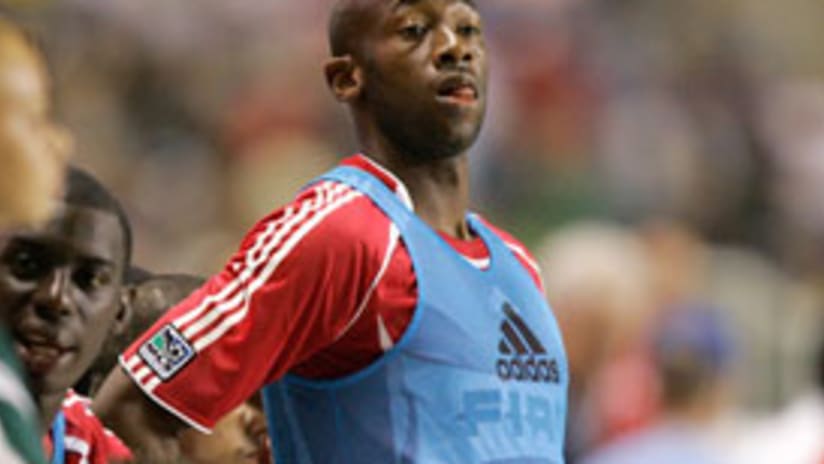On Friday, July 27, 2007, the Chicago Fire signed Senior International forward Paulo Wanchope. Wanchope, a native of Costa Rica, has played in Costa Rica, England-with Manchester City where Fire head coach Juan Carlos Osorio was an assistant-Argentina, and most recently Japan. From a fan's perspective, the signing meant more goals, while Osorio enjoyed receiving a world-class attacker to add to his arsenal. But behind the scenes, those working on the signing in the Fire's front office were working almost up to game day to see Wanchope on the field. Although signed, he still could not play for the Fire until he could fit on the roster, season-ending injuries were approved, and he obtained a work visa.
Per Major League Soccer regulations, the Fire are given 18 Senior Roster spots and 10 Developmental Roster spots to fill. Four of the 18 Senior Roster spaces can be reserved for Senior Internationals. Senior Internationals are non-U.S. citizen players that turn 25-years or older during the season. In the case of Wanchope, the Fire had an open fourth Senior International roster spot (via midfielder Ivan Guerrero obtaining a green card) so they could bring in an international player. However, all 18 positions were filled on the Senior roster, therefore a spot needed to be opened up - through the approval of a season-ending injury.
"First and foremost, we wanted to bring in a striker," said Fire President/CEO John Guppy. "There were other ways we could have approached opening a roster spot if we had needed to do that. Jimmy (Curtin) going on season ending was the easiest and most obvious way to do that."
Adding a player to the season-ending injury list is not as easy as an EA Sports' game in which you simply press a button and the player is placed on the disabled list. The Fire Head Athletic Trainer, Paul Ziemba, first had to evaluate defenders Curtin and Jordan Russolillo's injuries.
Curtin suffered a laberal tear in his right shoulder and will have surgery this month. His recovery time is scheduled to take three months placing him back at 100 percent around Christmas time. Russolillo will go under the knife in September to repair a laberal tear in his right hip. He will not fully recover for another nine months after the surgery.
The team physicians verify the report before sending it to the league office. Workman's comp also has to evaluate the injury report and approve that the injury is soccer-related and season-ending. In a system of checks and balances, the league has physicians check the report and finally the league approves the roster moves.
"For season ending injuries, everybody has to work together, not only the coaches and medical staff, but the Fire administration too to get everything done for it," said Ziemba. "It is a process. We have to have a lot of documentation not just from what we do here in the training room but as well what is seen by the physicians. All the medical information is reevaluated by a core group of league officials to justify that it is a season ending injury."
With a roster spot free, the process turned to the government to approve Wanchope's right to work in the States.
Playing soccer is a job for athletes, yet international players are still bound by the same laws as a factory worker immigrating to the States. Entering his new workplace as a citizen of Costa Rica, Wanchope had to first go through the legal process of obtaining his work visa. Although he had never played in the United States before, the process ran rather smoothly for the 31-year-old due to his economic standing as a former English Premier League player.
"He's still like everybody else that he has no credit history in the U.S. so it makes it a little harder to buy or rent a house without a social security number," said Fire Director of Team Operations Ron Stern of Wanchope's visa case. "His visa actually went quicker than most and that's just the luck of the draw."
First, Wanchope signed a contract with the Fire sending Stern into the process of filing for Wanchope's visa. A day before the game, he received a P-1 visa from the Department of Homeland Security, which is most often given to athletes and generally lasts the length of the players' contract, enabling him to play on Saturday. The process began with an application sent to the league-employed immigration attorneys. From there, the application goes to the Department of Homeland Security and it becomes a waiting process.
"The Department of Homeland Security can take basically as long as they want to approve or deny the visa," said Stern. "We've found that it takes two working weeks to get the visa."
Receiving his work visa only eight days after applying, thanks to the work of Guppy, Ziemba, Stern and all others involved in the process Wanchope made his Fire debut as planned against the Columbus Crew on August 4.










